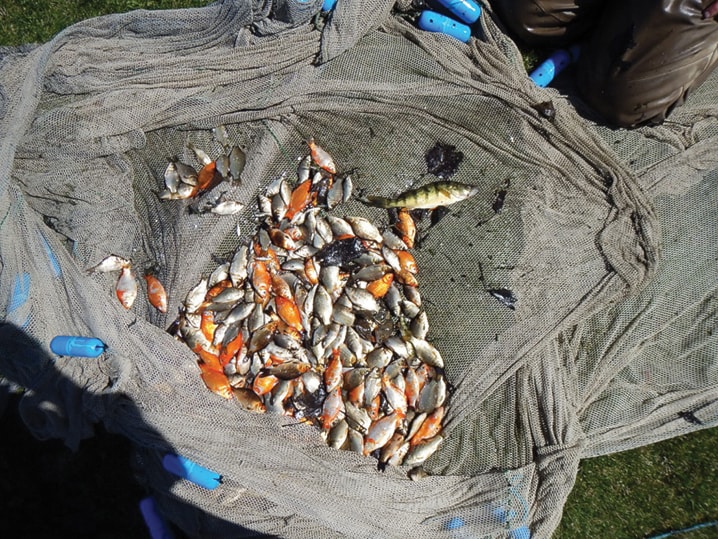The fact that goldfish can survive in the “wild” and through an Alberta winter shows just how hardy the seemingly harmless, cute little fish are.
But that hardiness may actually represent a serious danger to our waterways.
Red Deer now appears to be one more Alberta centre where these domesticated relatives of the carp fish have been dumped into a municipal storm water pond.
On Thursday, Alberta Environment and Parks technicians were on the Anders on the Lake storm water pond trying to net and check out goldfish that have been spotted in the water.
The goldfish aren’t escaping from aquariums on their own. People are intentionally letting them loose. That’s illegal — and for good reason.
All offences under Alberta’s Fisheries Act are subject to a court appearance, up to a $100,000 fine and/or a year in prison. For corporation violations (such as selling or importing prohibited species), the fine can be as high as $500,000.
Kate Wilson, aquatic invasive species specialist for Alberta Environment and Parks, said it’s a big concern that people are putting goldfish in these waters, especially if the storm water pond has any connectivity to creeks that then flow into rivers.
Wilson said they have had reports of goldfish surviving in storm water ponds from Lethbridge to Fort McMurray. Thursday was the first time she was aware of them being in a Red Deer pond.
In Fort McMurray, they found a goldfish the size of a dinner plate, she said. They found four different age classes, from young to fully grown, indicating the fish had been there for some time.
The province became aware of the problem about a year ago and have received numerous reports over the past month or so.
“If they can survive in a storm water pond in Fort McMurray, that’s really scary for where else they could survive,” said Wilson.
“It’s dangerous ecologically.”
Gold fish can eat other fish eggs, plants, plankton and algae, so they compete for food with native fish.
Anyone dumping their aquarium into ponds that then are connected to flowing water could be introducing parasites, disease and live plants that could become invasive, she said.
“And some of these species, if they don’t survive, it’s a really cruel thing to do to your pet. And if they do, they could be so hardy they could really jeopardize our native fish and wildlife.”
It’s hard to say what the impact is because it usually takes multiple years to get a handle on how something is going to negatively affect habitat or other native species around it.
“Often it’s too late by the time you figure it out. We know probably every jurisdiction in North America has found goldfish in urban storm water ponds. ... nobody thinks it’s a good thing.”
The province has started a “Don’t Let It Loose” campaign to raise public awareness. It will target aquarium and pet stores, pond supply stores and horticultural centres that might be selling aquatic plants, and people who are illegally stocking fish.
No one should ever let a pet loose in the wild, whether it’s a goldfish, turtle or a rabbit, she said. “It’s a really, really harmful thing to do.”
There are several ways to eradicate goldfish in a storm pond.
The best option is usually to draw down the water if possible and carefully dispose of the water, Wilson said. Electrofishing, netting or using a fish toxicant also can be done.
Goldfish aren’t officially considered an invasive species but their survival in ponds is a huge concern, Wilson said.
“It’s crazy.”
barr@www.reddeeradvocate.com
